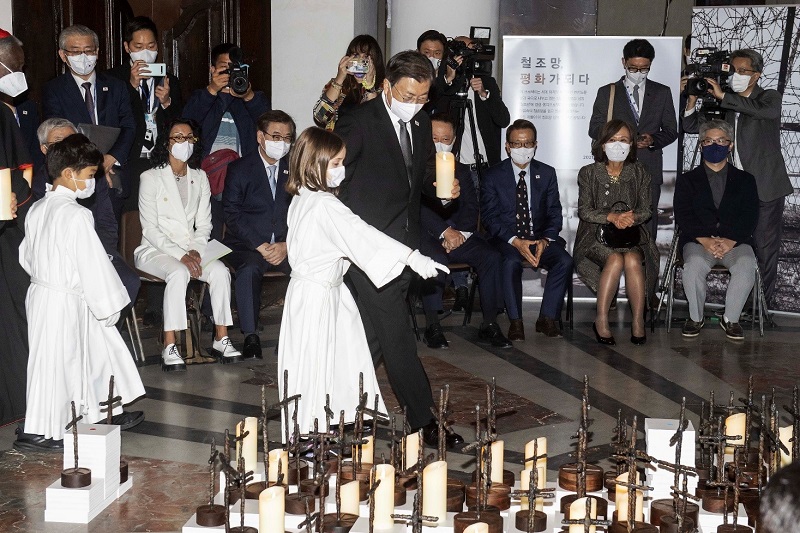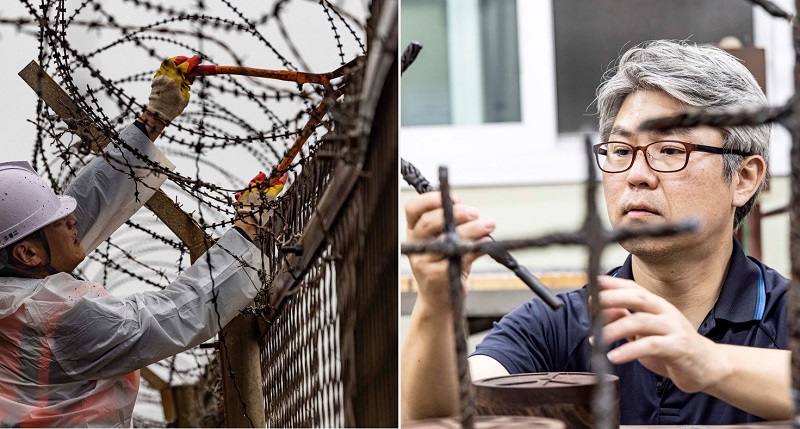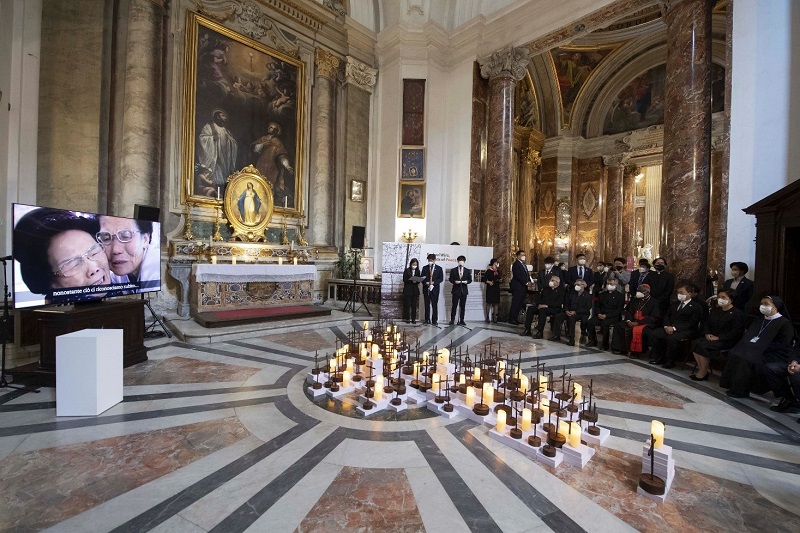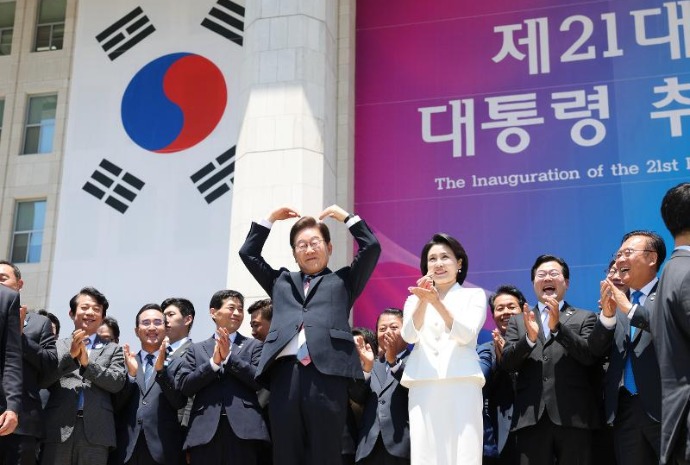- 한국어
- English
- 日本語
- 中文
- العربية
- Español
- Français
- Deutsch
- Pусский
- Tiếng Việt
- Indonesian
By Honorary Reporter Margherita Petrocelli, Safae Lagdani and Claudia Piccoli from Italy
Pictures = Kwon Daehun

President Moon Jae-in on Oct. 29 attends the opening of the exhibition "Barbed Wire, Heralds of Peace" in Rome while on a visit to Italy.
President Moon Jae-in on Oct. 29 attended the opening ceremony for the exhibition "Barbed Wire, Heralds of Peace" at the Church of St. Ignatius of Loyola at Campus Martius in Rome, Italy, during his visit to the country.
Made by Kwon Dae-hun, an artist and professor of sculpture at Seoul National University, the installation work comprises 136 crosses made from barbed wire used at the Demilitarized Zone (DMZ) that divides the Korean Peninsula.
The following are excerpts from a Nov. 18 interview with the artist.
Why did you choose Rome as the venue to debut your work?
The debut was planned for a cathedral in Korea and I started making it in January this year, but it was urgently changed to Rome on the occasion of President Moon's visit there to attend the summit of the Group of 20 economies. On the first day of the event, a meeting between the president and Pope Francis was scheduled, and the exhibition was arranged in time so that the Korean people's message of reunification was conveyed through the exhibition.
How did you get the idea of using barbed wire from the DMZ?
It came from a suggestion from the former chairman of the Korea Chamber of Commerce and Industry who is now head of the Order of Malta Korea. A devout Catholic, he had been working on several cross-making projects. One day, he received a barbed wire fence for an abandoned truce line, and he suggested to me making something from it.

Kwon Dae-hun, the maker of the installation work, is a professor of sculpture at Seoul National University.
Why did you specifically use 136 crosses to make your work?
The number is 68 times two. Sixty-eight years have passed since the end of the Korean War, and I doubled the number to symbolize 68 years of division in both Koreas.
What is the meaning of barbed wire vis-a-vis peace?
The barbed wire used in the work is a transparent barrier that divides the Korean Peninsula in two. It may be quite different from the old Berlin Wall and Hadrian's Wall of the Roman Empire. Through this work, we (the two Koreas) can look at each other but because we cannot approach each other, the pain is greater. This transparent barrier symbolizes Korea's pain and conflict being removed, twisted, tapped and melted to become something that symbolizes or urges peace.

Do you have a concluding message for Korea.net readers?
While viewing the work, please think about why this material had to be made as a cross and from barbed wire. With that brief thought and a one-word answer, I think our yearning for peace will grow little by little. Even if this work and exhibition are forgotten before reunification, if someone sees it again, he or she will question why this cross was made from rough barbed wire. Accordingly, I believe that this will spread the message of reunification again. Finally, I thank international visitors who showed a lot of interest in the exhibition in Rome.
kalhong617@korea.kr
*This article is written by a Korea.net Honorary Reporter. Our group of Honorary Reporters are from all around the world, and they share with Korea.net their love and passion for all things Korean.
